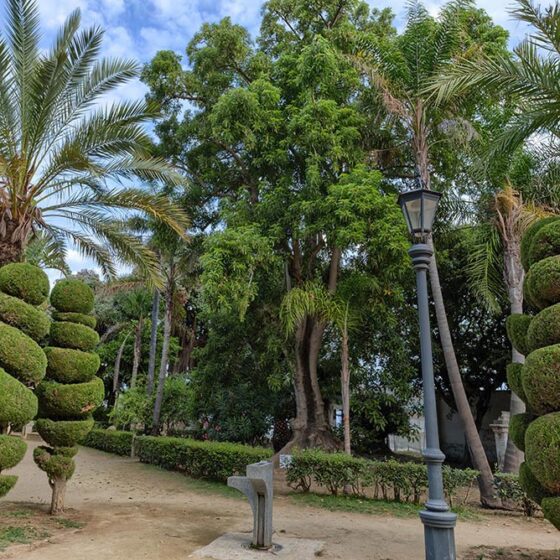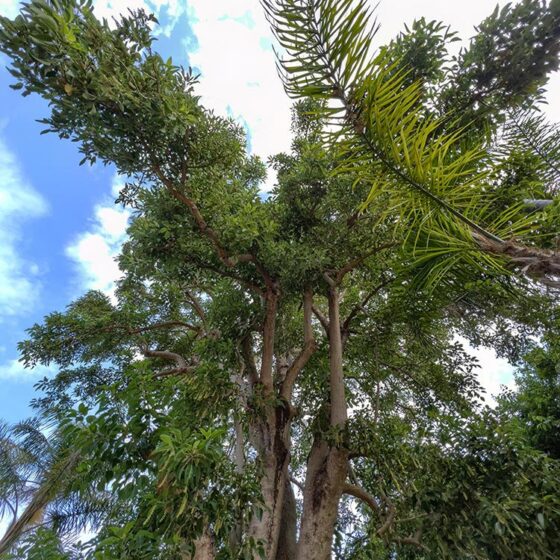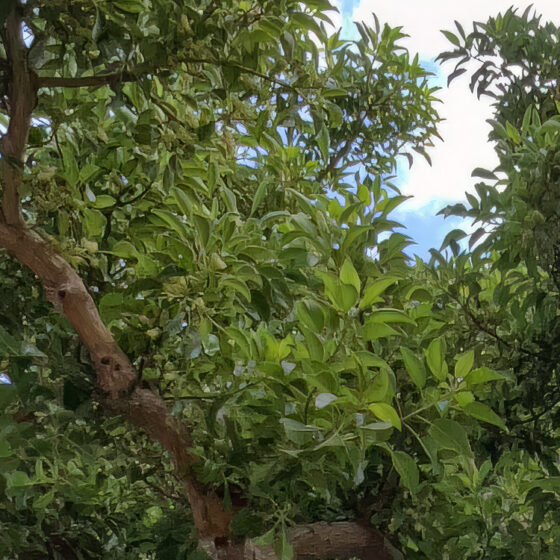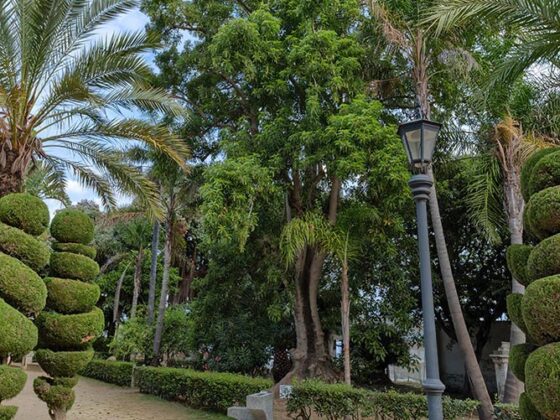Ombu
Phytolacca dioica
Its name comes from the guaraní and means shade or bulk. The genus derives from the Greek phyton (plant), and the Latin word laeca and the Indian term laek (rubber, lacquer), due to the colouring power of the fruits. The specific dioica refers to the separation of the flowers of each sex in different parts.
Originally from the Pampas of Argentina and Uruguay, Brazil and Peru.
A thick trunk, branched from the ground with large and aggressive roots which are visible. The crown is wide, measuring 10 to 15 m. tall. Its wood is spongy and soft with “herbaceous” characteristics, that accumulates a large amount of water, allowing it to survive in very dry places in the Pampas. Rapid growth. The sap is toxic and is not attacked by insects. Perennial, simple leaves, 20 cm. Elliptical leaves which are dark green and light on the underside, alternate with short petiole. It flowers in Spring, dioecious, in clusters, white, male with 20-30 stamens. Perianth with 4-5 pieces. The female with 10-12 carpels. Fleshy and toxic fruit in red berries, black seeds, ovoids that measure 3 mm long. It is multiplied by seeds.
They usually live isolated although in Uruguay they can exist forming forests. It is a rare species.
It serves as a shelter and shade for rest in the heat and flood of water. Its shade maintains the humidity of the ground and serves as a milestone to place distances and territories in the Pampa plain.
Its wood, if not dry enough, is not used for wood or for carpentry.
Dyes are extracted from the fruits and roots.
It is very long-living although age cannot be predicted due to the lack of annual growth rings.
It prefers soft and warm climates, only tolerates sporadic frosts and resists the salinity of the sea and humid soils of any nature.
There are specimens in Genovés Park, Alameda de Apodaca, Avenida de Andalucía, in the garden of the Trille Street Workshop School, Parque de los Cinco Continentes.







